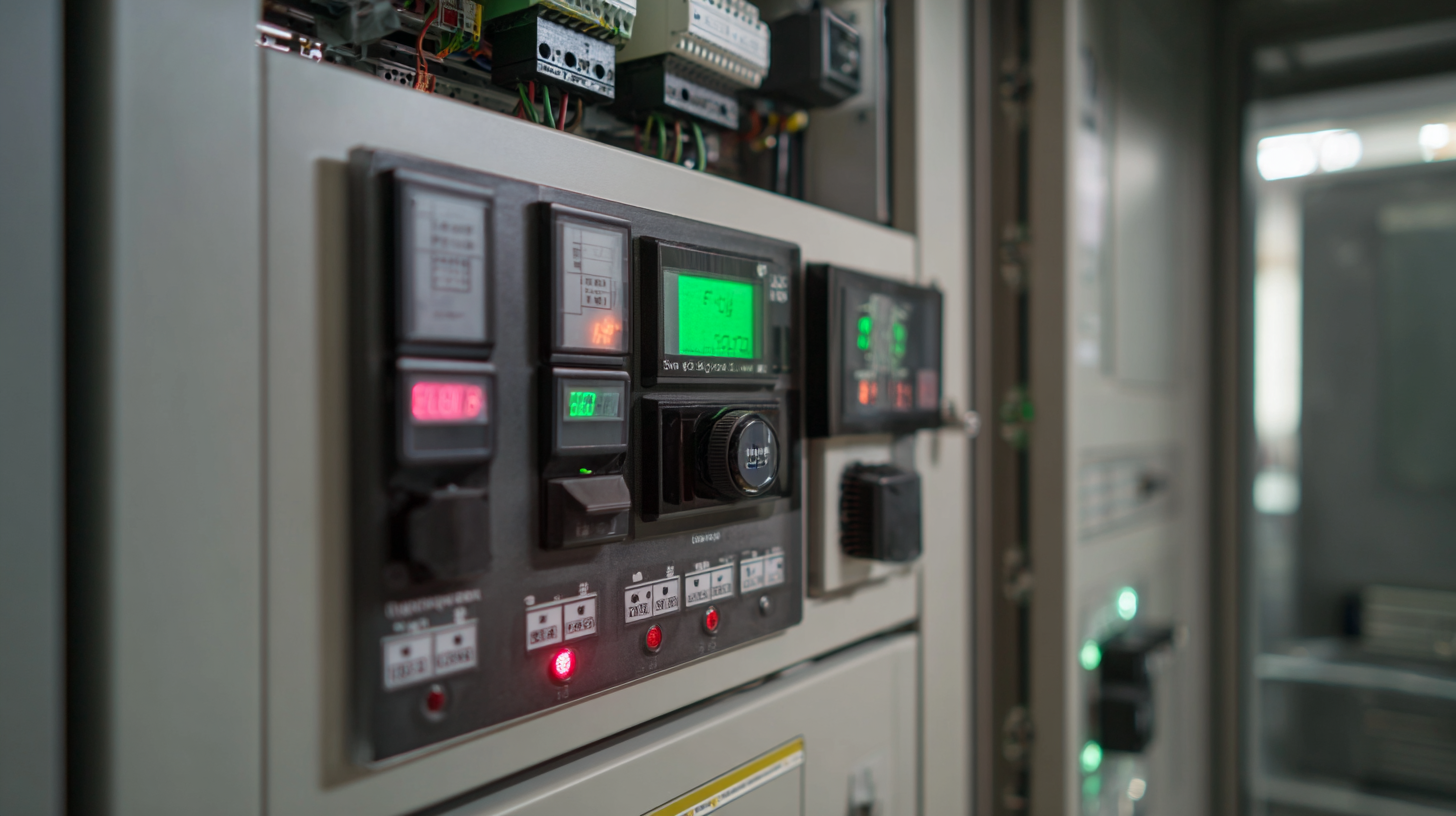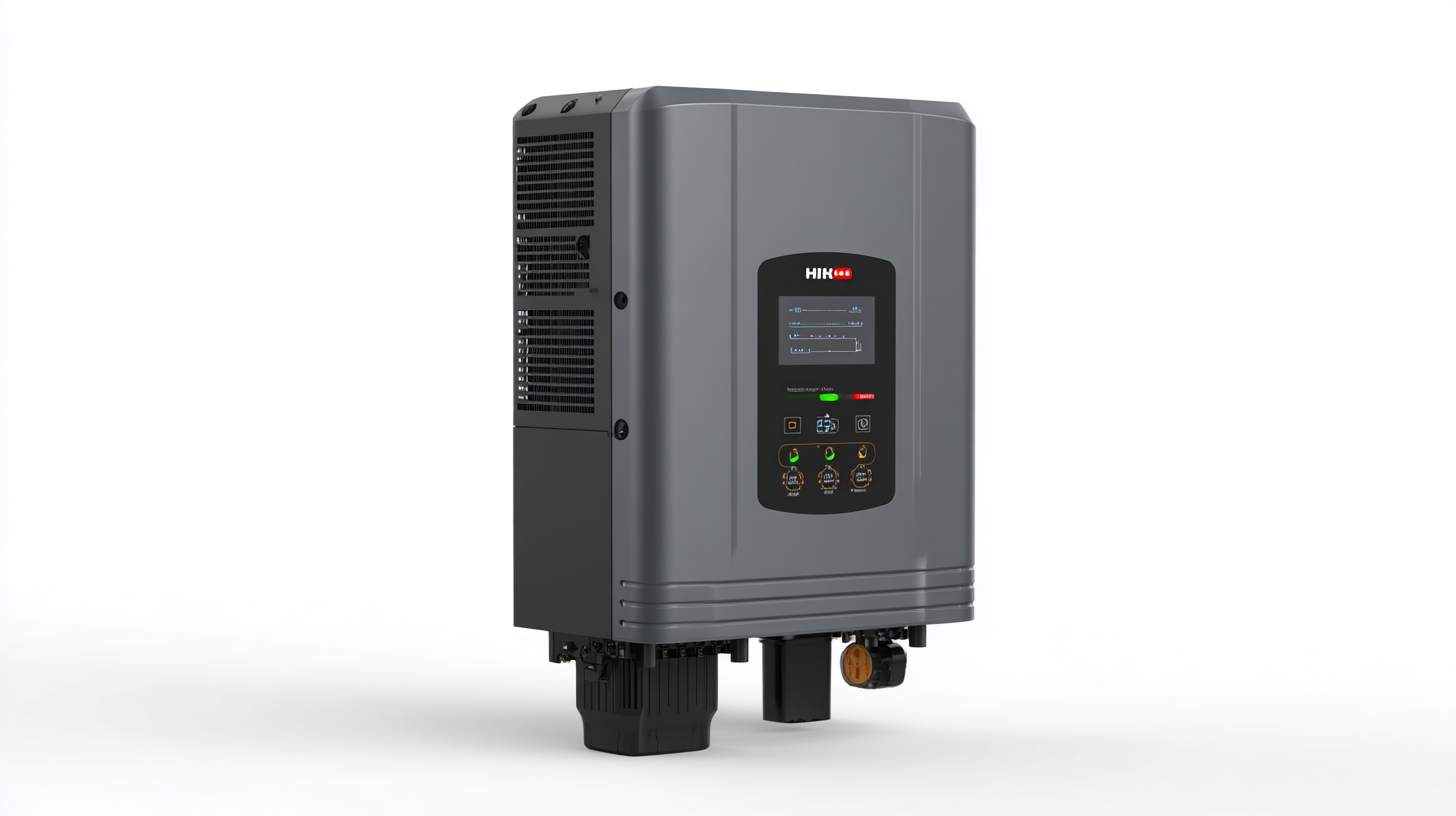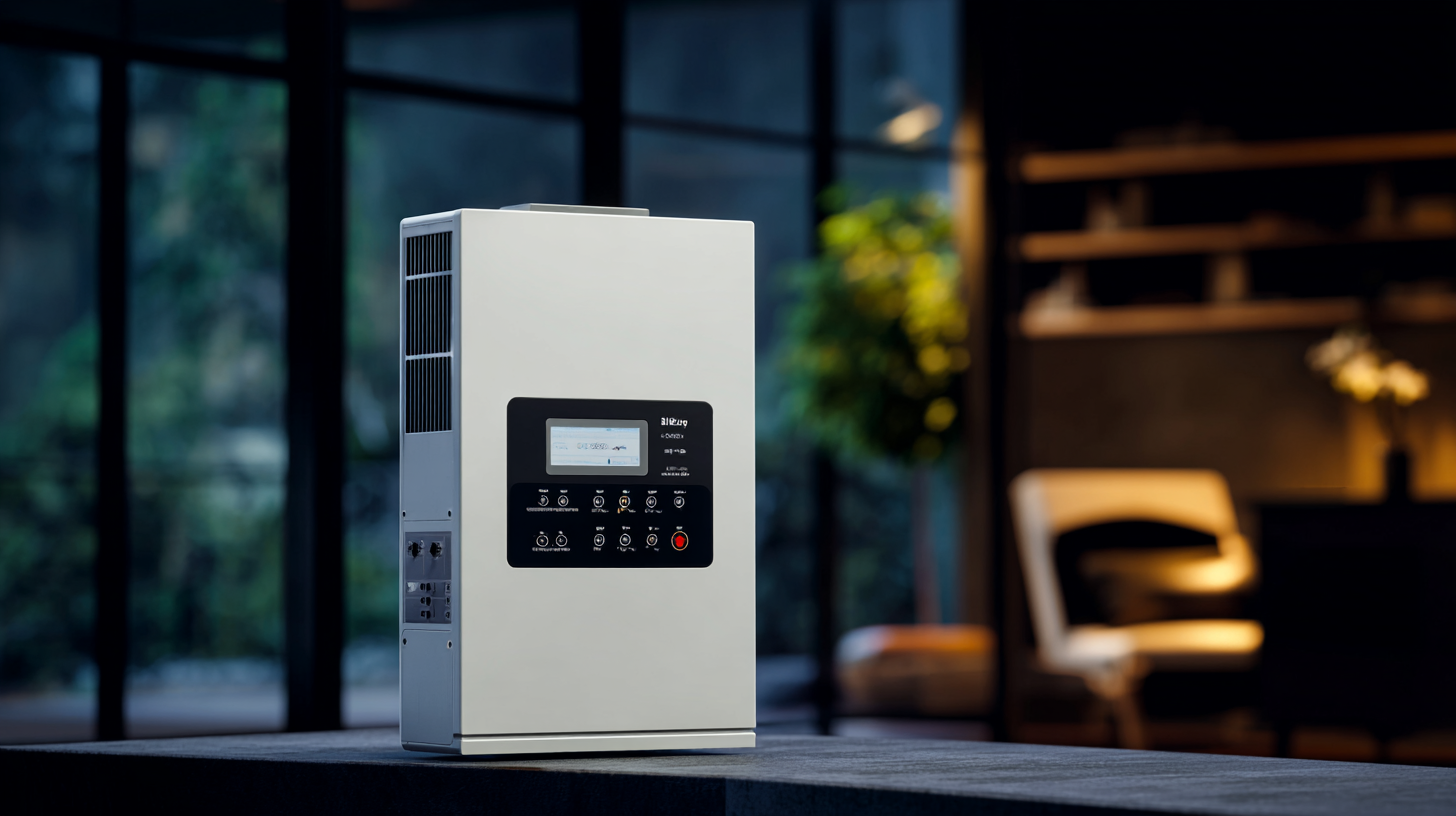Leave Your Message
In today's energy landscape, the hybrid inverter display has become a fundamental component in optimizing renewable energy systems. According to a recent report from the International Energy Agency (IEA), hybrid inverters are projected to account for over 40% of the global inverter market by 2025, highlighting a growing trend towards integrated solutions that combine solar power generation with energy storage.
 These advanced devices not only enhance the efficiency of solar energy usage but also provide real-time data visualization through their displays, enabling users to monitor system performance and energy consumption effectively.
As the demand for sustainable energy solutions rises, understanding the various display features of hybrid inverters—such as user accessibility, data representation, and connectivity options—becomes essential for making informed purchasing decisions and optimizing energy management strategies.
These advanced devices not only enhance the efficiency of solar energy usage but also provide real-time data visualization through their displays, enabling users to monitor system performance and energy consumption effectively.
As the demand for sustainable energy solutions rises, understanding the various display features of hybrid inverters—such as user accessibility, data representation, and connectivity options—becomes essential for making informed purchasing decisions and optimizing energy management strategies.
When exploring hybrid inverters, understanding the key display features is essential for maximizing their potential. These inverters combine solar energy with grid power, making their display units a crucial part of system management. A well-designed display provides real-time data on energy production, battery status, and grid connectivity. This information empowers users to optimize their energy consumption, ensuring that they can utilize their renewable resources effectively.
The interface of the display is another vital component. User-friendly features such as touchscreen capabilities, clear graphical representations, and customizable dashboards enhance the user experience. Homeowners can monitor their energy flow at a glance and adjust settings as needed. Additionally, alarms and notifications for system issues are vital, helping users stay informed about their inverter's performance and safety. By prioritizing these display features, consumers can make informed decisions and enhance the efficiency of their hybrid inverter systems.
When choosing a hybrid inverter, understanding the display technology can significantly enhance user experience. The two primary display technologies utilized in hybrid inverters are LCD (Liquid Crystal Display) and LED (Light Emitting Diode). Each has its own unique advantages that can influence a user's decision depending on their specific needs.
LCD displays are known for their versatility and cost-effectiveness. They offer crisp visuals and are capable of displaying complex data, which makes them suitable for detailed monitoring of system performance. However, their visibility can be affected by ambient lighting conditions, sometimes appearing washed out in bright environments. On the other hand, LED displays provide higher brightness levels and better contrast, ensuring that data remains legible in various lighting situations. They are typically more energy-efficient and have a longer lifespan, making them a popular choice for modern hybrid inverters.
In terms of user interaction, both display types come with their own user interfaces. LCDs often feature touchscreen capabilities, offering an intuitive way to navigate through different settings and performance metrics. Conversely, some LED displays utilize simpler button-driven interfaces, which may be preferred by users who appreciate straightforward functionality. Ultimately, the choice between LCD and LED technology in hybrid inverters will depend on personal preference and the specific conditions in which the inverter will operate.
This chart compares key display features of LCD and LED technologies used in hybrid inverters. LCD displays generally offer lower brightness and longer response times, while LED displays provide higher brightness, faster response times, and longer lifespans, making them more efficient for modern applications.
When selecting a hybrid inverter, understanding the display features is crucial. The display readings provide essential metrics that can help you monitor performance and diagnose issues. Look for real-time data on energy production, consumption, and battery status. A clear and user-friendly interface enhances visibility, making it easier for users to interpret the information.
**Tip:** Ensure the inverter has customizable display options so you can prioritize the metrics that matter most to you. This flexibility allows for quick assessments, reducing downtime in case of irregularities.
Another key metric is historical performance data, which can give insights into trends over time. This feature helps users track efficiency and optimize their energy usage. Additionally, alerts and notifications about system performance or maintenance needs should be visible, ensuring that you remain informed without constantly inspecting the display.
**Tip:** Consider inverters that offer remote monitoring capabilities. This way, you can check your system’s performance from anywhere, allowing for proactive management and timely interventions.

When it comes to hybrid inverters, user experience is paramount. The interface serves as the bridge between the technology and the user, making it essential for effective navigation and operation. With the latest advancements in user interface design, such as those seen in recent software updates, hybrid inverter displays are becoming increasingly intuitive. Features like customizable dashboards and easy-to-navigate menus enhance the user experience, allowing individuals to monitor their energy consumption and system status with ease.
Moreover, the recent trend towards sharing custom interfaces highlights the importance of community and collaboration among users and developers. This approach not only fosters innovation but also provides users with tailored solutions that cater to their specific needs. By integrating user feedback and preferences, manufacturers can create interfaces that improve usability, ensuring that navigating hybrid inverter systems is a streamlined experience. As technology evolves, so too will the ways users interact with these devices, emphasizing the need for adaptability and forward-thinking design in hybrid inverter displays.
When selecting a hybrid inverter, choosing the right manufacturer is paramount to ensuring quality and reliability. According to a recent market analysis by ResearchAndMarkets, the global hybrid inverter market is projected to grow at a CAGR of 15.7% from 2023 to 2030. This growth is fueled by the increasing demand for renewable energy solutions and energy storage systems.
 Manufacturers that adhere to rigorous quality standards, such as ISO 9001, tend to produce more reliable products that can sustain harsh conditions, which is crucial for both residential and commercial applications.
Manufacturers that adhere to rigorous quality standards, such as ISO 9001, tend to produce more reliable products that can sustain harsh conditions, which is crucial for both residential and commercial applications.
Additionally, it's essential to assess a manufacturer's track record and customer feedback. A report by IHS Markit highlights that consumer trust can significantly influence purchasing decisions, emphasizing the importance of companies that maintain transparency and provide strong after-sales support. Manufacturers with proven longevity in the industry, supported by warranties and robust product testing, are more likely to deliver hybrid inverters that not only meet performance expectations but also provide peace of mind to users.
